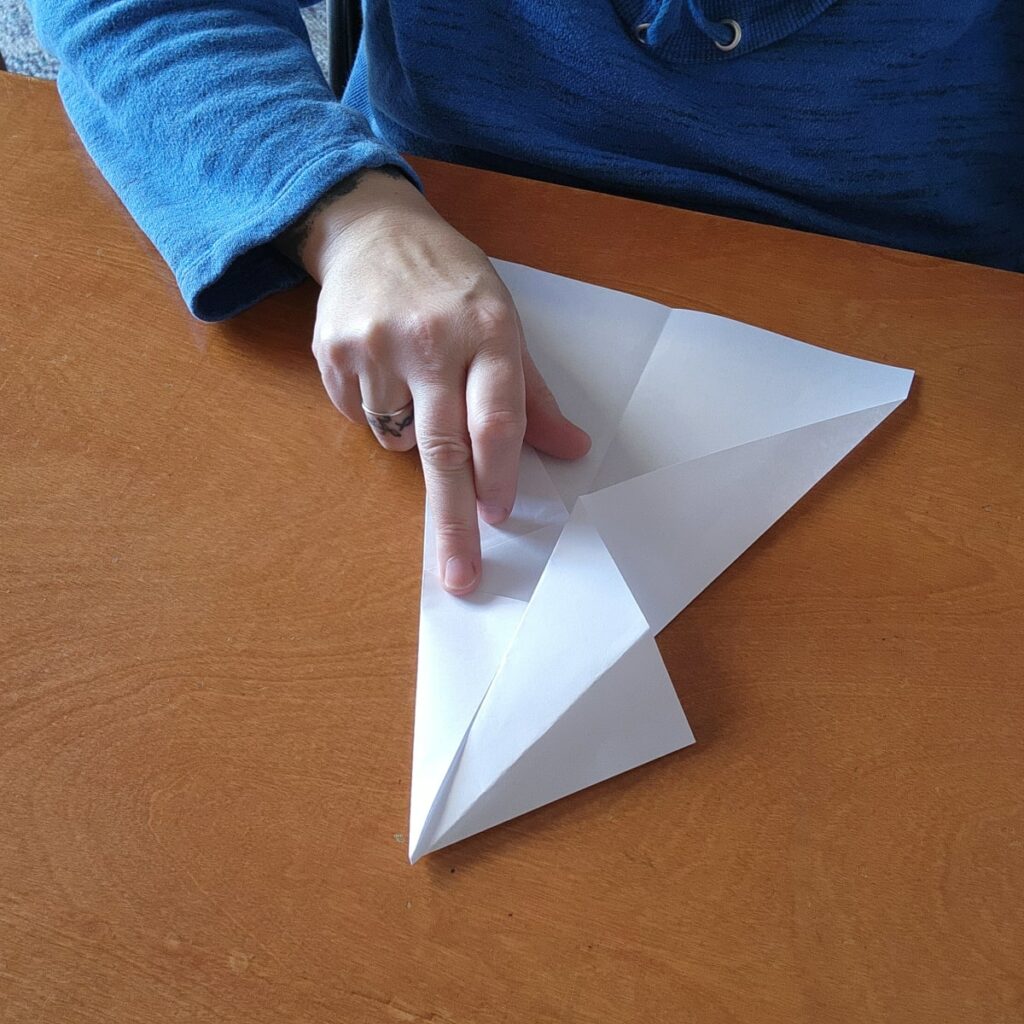To make a paper plane, follow these simple steps: first, fold the paper in half vertically. Then, fold the corners down to the center crease.
Making a paper plane is a fun activity enjoyed by people of all ages. There are many different designs and variations that can be made, ranging from simple to complex. Paper planes can be made using any type of paper, but typically, lighter paper works best for longer flights.
In this article, we will go over a step-by-step process on how to make a basic paper plane, as well as some tips and tricks to improve your paper plane-making skills. So, grab a piece of paper and let’s get started!

Credit: www.freepik.com
Ingredients Required To Make A Paper Plane
Crafting an airplane out of paper can be an exciting pastime for people of all ages. To begin, you will need some basic materials such as a sheet of paper, scissors, and a flat surface to work on. However, different designs may require some optional materials such as tape, markers, or colored paper.
Before starting the project, ensure that all materials are in place and ready to use. Using proper materials is the foundation for making a well-constructed paper airplane.
Understanding The Fundamentals
Making a paper plane involves the fundamentals of science. To create one, you need to understand the principles of aerodynamics. Basic tips for flying a paper plane include proper folding and throwing techniques. Before creating a plane, ensure that you have the necessary materials, such as a sheet of paper, a flat working surface, and a ruler.
By following these steps, you can create amazing paper planes that can fly for a long distance. Understanding the science behind creating a paper plane can help you improve your skills and create better models. By applying these techniques, you can impress your friends with your knowledge and skill in making paper planes.
So why not try making one today and see how far you can fly it!
Preparing The Perfect Base For Your Paper Plane
To make a paper plane, the perfect base is crucial. Choosing the right paper is the first step. The paper needs to be thin, yet durable enough. A rectangular-shaped paper with dimensions of 8. 5 x 11 inches is perfect.
However, you can use any paper as long as it meets these requirements. The next step is to fold the paper perfectly to achieve the base. Start by folding the top corners of the paper to the center crease. Then, fold the paper in half so that the top edge meets the bottom edge.
Finally, fold the wings to complete your paper plane. These simple tips will ensure your paper plane takes off with ease.
Creating Different Types Of Paper Planes
Paper planes are a childhood favorite that can be enjoyed by all ages. There are different types of paper planes you can make depending on your skill level and creativity. It’s important to understand the distinction between different types of planes to create the perfect paper plane.
To make the basic dart, fold a piece of paper in half, create a triangle at one end, then fold the wings in. The bird plane involves creating two smaller triangles on the sides of the basic dart. The hawk paper plane is similar to the bird plane, but with a sharper beak and tail.
Finally, origami-inspired paper planes use complex folding techniques to create intricate and unique designs. Have fun experimenting with different types of paper planes and let your imagination soar!
Tips And Tricks For The Perfect Flight
Making a paper plane can be tricky, but with a few simple tips and tricks, you’ll be able to create the perfect flight. Adjusting the wings is crucial for a better flying experience. Adding decorative elements can also make your paper planes stand out.
However, be careful not to overdo it and weigh down the plane, or make it too complicated to fly. Avoid common mistakes such as using too heavy or thin paper, or making the wings too narrow or wide. Troubleshooting issues such as a lack of lift or stability can also be fixed through adjustments to the wings.
With these tips and tricks, you’ll be able to create paper planes that soar through the air with ease!
Frequently Asked Questions Of How To Make A Paper Plane
How Do You Make A Paper Plane That Flies Far?
Making a paper plane that flies far involves folding the wings and using the correct aerodynamic properties. A simple design with a pointed nose and narrow wings is more likely to fly further.
What Is The Best Type Of Paper To Use For A Paper Plane?
The weight and stiffness of the paper are important factors when it comes to making a good paper plane. The best type of paper is a4 paper, or thin card stock.
How Many Types Of Paper Planes Are There?
There are many types of paper planes, with different styles, designs, and levels of difficulty to make. Some popular designs include the classic dart, bulldog plane, and the hammerhead.
Is Making Paper Planes Educational For Kids?
Making paper planes is an excellent educational activity for kids to learn about the principles of flight. It helps them develop problem-solving, spatial awareness, and critical thinking skills.
How Do You Decorate And Personalize A Paper Plane?
There are endless ways to decorate and personalize a paper plane. You can use stickers, colored pencils, glitter, and even add a message to make it unique. Be creative and have fun!
Conclusion
As you can see, making a paper airplane is not only easy and fun, but it can also be educational. Improving your skills and exploring new techniques can lead to building more complex and advanced models. Moreover, we hope that this guide has shown you how powerful and fulfilling paper folding can be, while also unleashing your creativity and imagination.
Don’t forget that practice makes perfect and that there’s always room for improvement. So, grab a piece of paper and start folding your own paper airplanes today. Who knows, you may even discover your own unique design that will take you to the skies! Happy folding!







